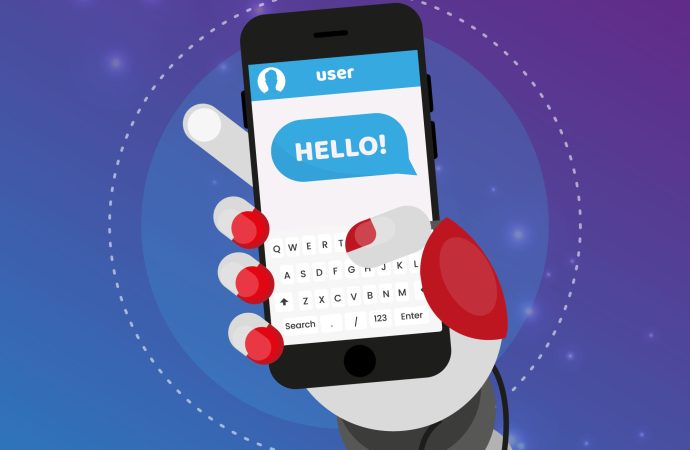Introduction In the realm of artificial intelligence, chatbots have become increasingly prevalent, transforming the way we interact with technology. These AI-powered conversational agents have found applications in customer service, virtual assistants, and various other domains. However, accurately assessing the capabilities and effectiveness of chatbots has been a longstanding challenge. Enter AI pioneer Dr. Sarah Mitchell,
Introduction
In the realm of artificial intelligence, chatbots have become increasingly prevalent, transforming the way we interact with technology. These AI-powered conversational agents have found applications in customer service, virtual assistants, and various other domains. However, accurately assessing the capabilities and effectiveness of chatbots has been a longstanding challenge. Enter AI pioneer Dr. Sarah Mitchell, whose visionary approach to chatbot assessment is poised to shape the future of this field. In this article, we will explore Dr. Mitchell’s groundbreaking Turing Test and delve into its potential implications for the future of chatbot assessment.
The Evolution of Chatbot Assessment
Traditional chatbot assessment has largely relied on the Turing Test, proposed by Alan Turing. While the Turing Test has been instrumental in the development of AI, it has limitations when it comes to evaluating the true intelligence and effectiveness of chatbots. Dr. Mitchell recognized these limitations and set out to redefine chatbot assessment with a focus on enhancing user experiences and advancing the capabilities of these conversational agents.
Dr. Sarah Mitchell’s Visionary Turing Test
Dr. Sarah Mitchell’s visionary Turing Test introduces a comprehensive framework that goes beyond superficial conversations and prioritizes the qualities that make chatbots truly valuable. Her assessment method aims to evaluate the chatbot’s ability to understand user intent, provide accurate and meaningful responses, and create engaging and interactive experiences.
Key Elements of the Visionary Turing Test
1. Intent Recognition and Contextual Understanding
Dr. Mitchell emphasizes the importance of chatbots accurately understanding user intent and context. The assessment framework evaluates the chatbot’s ability to interpret user queries, identify underlying intentions, and respond appropriately. By focusing on intent recognition and contextual understanding, chatbots can deliver more relevant and personalized interactions, improving user satisfaction.
2. Knowledge Base and Expertise
A crucial aspect of chatbot assessment lies in their knowledge base and expertise. Dr. Mitchell’s framework emphasizes the evaluation of a chatbot’s knowledge and its ability to provide accurate and reliable information. By assessing the chatbot’s expertise in specific domains, the framework aims to ensure that chatbots offer valuable insights and guidance to users.
3. Natural Language Generation and Fluency
An essential characteristic of a proficient chatbot is its ability to generate natural and fluent responses. Dr. Mitchell’s Turing Test evaluates the chatbot’s capacity to produce coherent and contextually appropriate messages. This includes assessing grammar, vocabulary, and overall fluency to ensure that chatbots can engage users in meaningful conversations.
4. Emotional Intelligence and Empathy
Recognizing the significance of emotional intelligence in human interactions, Dr. Mitchell’s assessment framework includes the evaluation of chatbots’ empathetic capabilities. By assessing their understanding of emotions and their ability to respond with empathy, chatbots can create more compassionate and supportive experiences, particularly in applications like mental health support and counseling.
5. Adaptability and Continuous Learning
To keep pace with evolving user needs and changing contexts, chatbots must demonstrate adaptability and a capacity for continuous learning. Dr. Mitchell’s Turing Test evaluates the chatbot’s ability to learn from user interactions, improve over time, and adapt its responses based on user feedback. This dynamic learning capability ensures that chatbots remain relevant and effective in the long run.
Implications for the Future
Dr. Sarah Mitchell’s visionary Turing Test marks a significant milestone in the evolution of chatbot assessment. By shifting the focus towards user experiences, personalization, and advanced capabilities, this assessment framework has the potential to revolutionize the chatbot landscape. It encourages the development of more intelligent, interactive, and user-centric chatbots that can truly augment our daily lives.
As Dr. Mitchell’s visionary approach gains traction, we can expect a new era of chatbot development, with heightened emphasis on natural language understanding, knowledge integration, emotional intelligence, and adaptability. These advancements will not only enhance user satisfaction but also open doors to new applications and possibilities for chatbots across industries.
In conclusion, the future of chatbot assessment lies in Dr. Sarah Mitchell’s visionary Turing Test. This groundbreaking framework emphasizes user-centricity, advanced capabilities, and personalized interactions, setting a new standard for evaluating chatbot intelligence. As the field continues to evolve, Dr. Mitchell’s visionary approach will shape the trajectory of chatbot development and usher in a new era of AI-powered conversational agents.

















Leave a Comment
Your email address will not be published. Required fields are marked with *